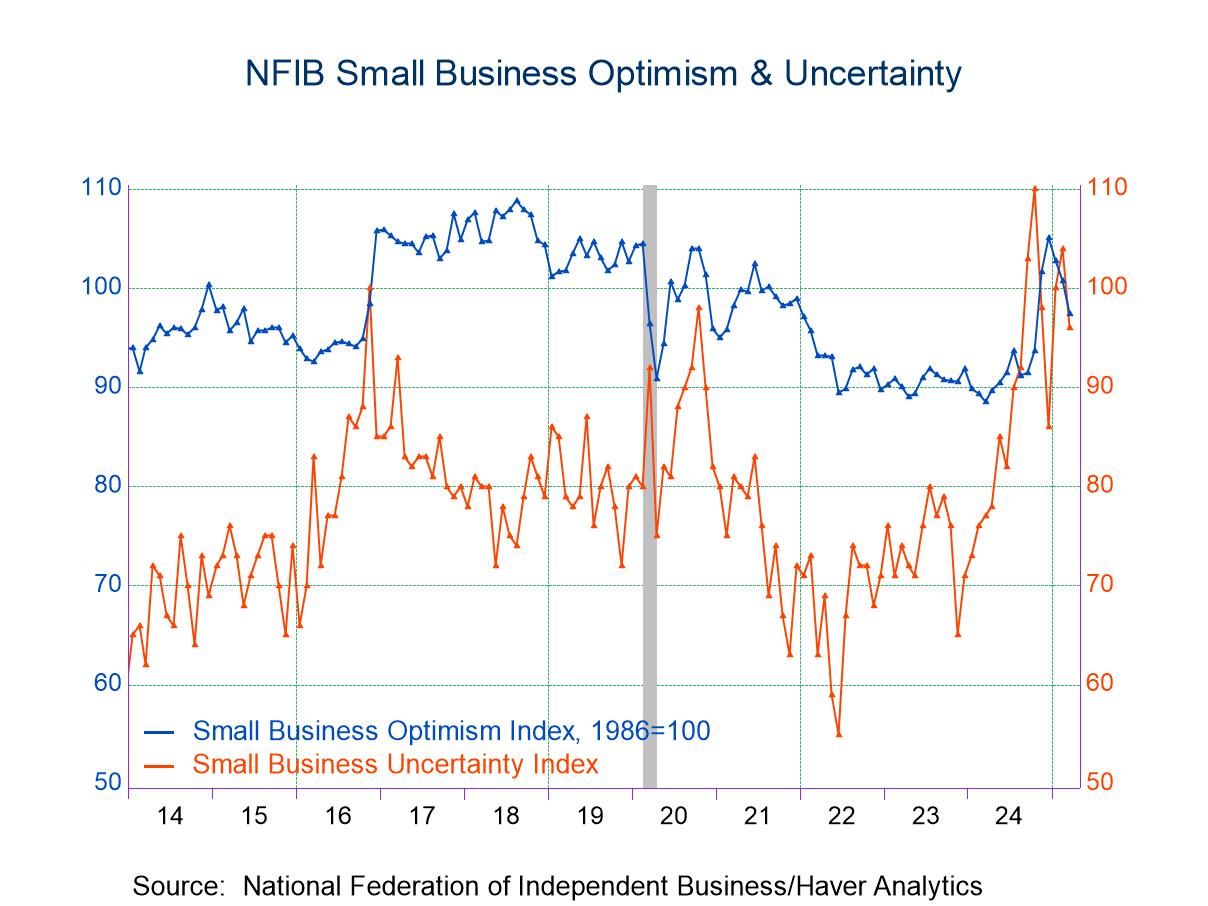U.S. Initial Claims for Unemployment Insurance Maintain Recent Low Range
Summary
- Initial filings rise modestly in October 8 week.
- Continued weeks claimed maintain recent tight range.
- Insured unemployment rate still holds near-record low.


Initial claims for unemployment insurance were 228,000 (-28.1% y/y) in the week ended October 8, up from 219,000 the week before, which was unrevised. The Action Economics Forecast Survey expected 220,000 initial claims for last week. The 4-week moving average of initial claims was 211,500, up from 206,500 in the October 1 week, still down from an early-August high of 249,500 but higher than an early-April low of 170,500.
In the week ended October 1, continued weeks claimed for unemployment insurance were up slightly to 1.368 million (-46.8% y/y) from 1.365 million in the prior week, revised from 1.361 million. The 4-week moving average fell to 1.364 million in the October 1 week, from 1.372 million and again the smallest number of continuing claims since the third week of July.
The insured unemployment rate in the week ended October 1 was again 1.0%, unchanged from the prior week, also unrevised. The insured unemployment rate has been fluctuating between 0.9% and 1.0% since April, a record-low range for the series, which dates back to 1971.
In the week ended September 24, the total number of continued weeks claimed in all unemployment insurance programs rose to 1.255 million (-65.6% y/y). This total includes federal employees, newly discharged veterans, extended benefits and other specialized programs and is not seasonally adjusted. Claims in the Pandemic Unemployment Assistance program and Pandemic Emergency Unemployment Compensation are no longer included in the main Labor Department press release, as both programs have expired.
The insured rates of unemployment in regular programs vary widely across states. The highest insured unemployment rates in the week ending September 24 were in Puerto Rico (2.05%), California (1.78%), New Jersey (1.73%), New York (1.35%) and Rhode Island (1.21%). The lowest rates were in South Dakota (0.16%), North Dakota (0.21%), Alabama (0.22%), Virginia (0.24%) and Kansas (0.26%). Other state insured rates of unemployment in regular programs include Pennsylvania (1.00%), Illinois 1.01%, Texas (0.81%) and Florida (0.38%). These state rates are not seasonally adjusted.
Data on weekly unemployment claims going back to 1967 are contained in Haver's WEEKLY database, and they are summarized monthly in USECON. Data for individual states are in REGIONW. The expectations figure is from the Action Economics Forecast Survey, carried in the AS1REPNA database.


Carol Stone, CBE
AuthorMore in Author Profile »Carol Stone, CBE came to Haver Analytics in 2003 following more than 35 years as a financial market economist at major Wall Street financial institutions, most especially Merrill Lynch and Nomura Securities. She has broad experience in analysis and forecasting of flow-of-funds accounts, the federal budget and Federal Reserve operations. At Nomura Securites, among other duties, she developed various indicator forecasting tools and edited a daily global publication produced in London and New York for readers in Tokyo. At Haver Analytics, Carol is a member of the Research Department, aiding database managers with research and documentation efforts, as well as posting commentary on select economic reports. In addition, she conducts Ways-of-the-World, a blog on economic issues for an Episcopal-Church-affiliated website, The Geranium Farm. During her career, Carol served as an officer of the Money Marketeers and the Downtown Economists Club. She has a PhD from NYU's Stern School of Business. She lives in Brooklyn, New York, and has a weekend home on Long Island.





